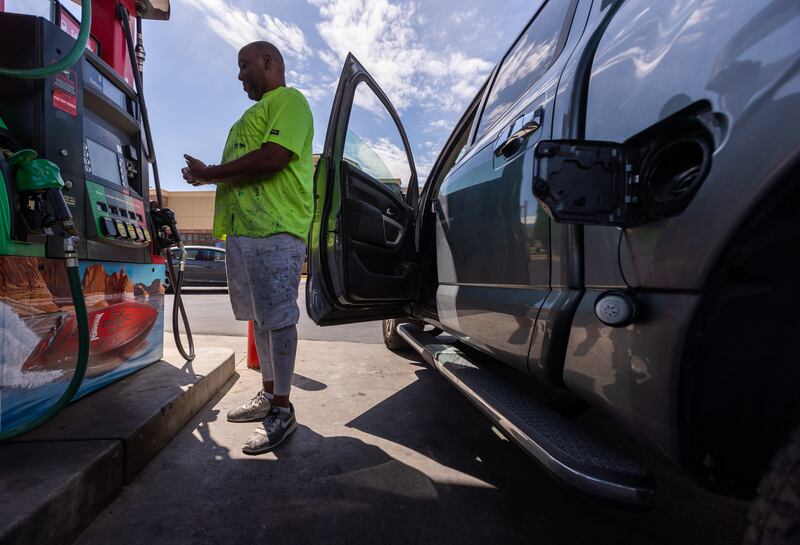Gas prices remain higher than they were a year ago, but the average cost for a gallon of regular has dropped nationwide for 70 straight days.
The national average for a gallon of regular gas has dropped every day since swelling to a record high of $5.02 a gallon on June 14, according to AAA. The national average as of Tuesday was $3.89 per gallon.
The current streak at the pump is the second longest on record going back to at least 2005, Bespoke Investment Group noted in a report titled “The Great American Summer of Falling Gas Prices,” according to CNN.
The national average for regular gas dipped on Wednesday to $3.88 a gallon, down from $4.36 a month ago.
Prices in Utah have also dropped but remain significantly higher than much of the country. A gallon of regular gas in the Beehive State on Wednesday sold for $4.55 on average.
Utah has the eighth highest prices in the nation, according to AAA. All of the states in the top 10 are in the West, except New York and Illinois. Hawaii has the highest cost followed by California, Nevada, Alaska and Oregon.
Industry experts say numerous factors contribute to differing gas prices from state to state, including variations in state gas tax rates and clean fuel surcharges. Also, western states have less extensive petroleum distribution networks than other regions that lead to higher costs for delivering fuel to consumers and, ultimately, higher prices at the pump.
AAA reported earlier this week that stable global oil prices and modest domestic demand for gasoline led prices to fall a nickel in the past week.
“Drivers are now benefiting from gas prices that are $1.11 less than their peak in mid-June,” Andrew Gross, AAA spokesperson, said in a statement Monday. “But now we need to keep an eye on the weather as hurricane season arrives. These storms can affect prices by disrupting oil production in the Gulf of Mexico and impacting large coastal refineries.”
As of Monday, the national average was 51 cents less than a month ago but 74 cents more than a year ago.
The only longer streak dating back to 2005 lasted 117 days and ended in January 2015, according to Bespoke. Moreover, the percentage decline in gas prices so far this month is the steepest at this point in August on record, the report found.
AAA reported:
- The nation’s top 10 largest weekly decreases: Florida (−12 cents), West Virginia (−11 cents), Maine (−11 cents), New Jersey (−11 cents), Rhode Island (−11 cents), Vermont (−11 cents), Massachusetts (−11 cents), Wyoming (−10 cents), Connecticut (−10 cents) and Mississippi (−10 cents).
- The nation’s top 10 least expensive markets: Arkansas ($3.41), Mississippi ($3.43), Georgia ($3.43), Texas ($3.44), Tennessee ($3.44), Louisiana ($3.46), South Carolina ($3.46), Missouri ($3.47), Alabama ($3.47) and Kansas ($3.48).


